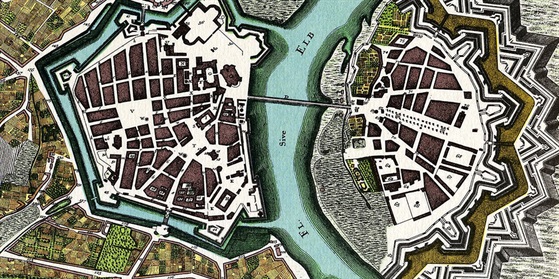🏰
History
The city of Dresden can look back on over 800 years of history. Numerous museums provide an interesting, deeper insight into the city's history.
Dresden was created in the 12th century by the settlement of craftsmen and traders on the new trade routes that were emerging at the time.
The city grew only hesitantly at the beginning until it reached its first heyday in the 14th century under Duke Georg the Bearded from the Wettin family.
In 1547, after the Schmalkaldic War had ended, the Albertine princes received the title of Elector, making Dresden the capital of the important Protestant country.
From 1620 onwards Kursachsen participated again and again in the thirty year old age group. The city itself suffered a severe setback in its urban development due to hunger plague and economic decline.
In 1698 Elector Friedrich Augustus I (Augustus the Strong) won the Polish Crown, turning Dresden into a baroque city and becoming increasingly important in Europe.
Napoleon defeated Saxony in 1805 and the French army marched into Dresden. During the Congress of Vienna in 1815, Saxony lost half of its territory to Prussia.
By the middle of the 19th century, Dresden already had more than 100,000 people, and traffic structures had changed the overall appearance of the city enormously. With half a million inhabitants, Dresden was one of the fourth largest cities in Germany at the turn of the century.
After the November Revolution of 1918, the Free State of Saxony was formed. Dresden's structural and cultural development came to an abrupt end when the National Socialists seized power.
Between 13 and 15 February 1945, Dresden was destroyed by five successive air raids. At least 25,000 people died. The culturally and historically valuable part of the city centre was buried under rubble or destroyed. On 8 May Dresden was occupied by the Soviet army.
The reconstruction of the city began in the early fifties. In 1952, three years after the foundation of the GDR, Dresden became the district capital. The previous importance of Dresden as an industrial location was not regained - despite considerable efforts.
From 1989 there were also larger demonstrations in Dresden, which contributed to the end of the GDR. The "Group of Twenty" forced a dialogue with the local authorities. The peaceful occupation of the headquarters of the State Security Service took place in December.
Since the reunification of Saxony, Dresden has regained its former importance as the capital of the Free State of Saxony and has since changed its face through extensive construction measures. Dresden developed into one of the most attractive cities in terms of tourism and housing.

©
Dresden1750 Matthaeus Seutter Festung Dresden, CC0
